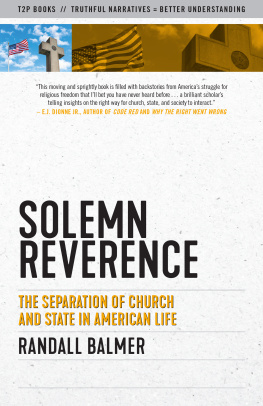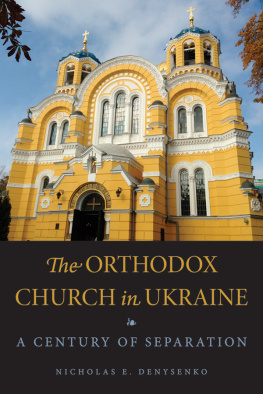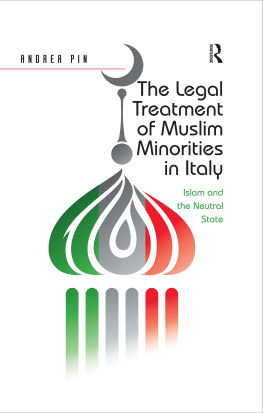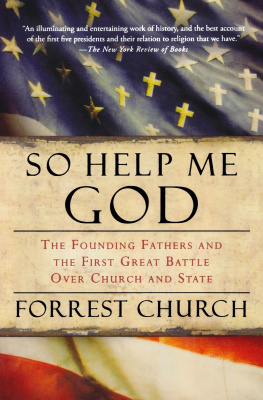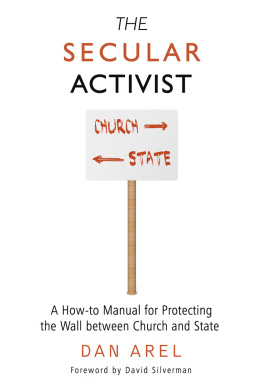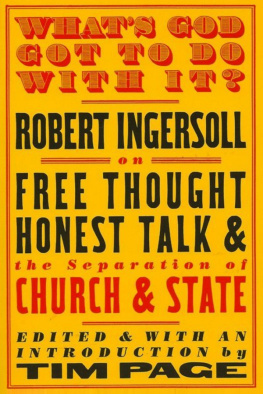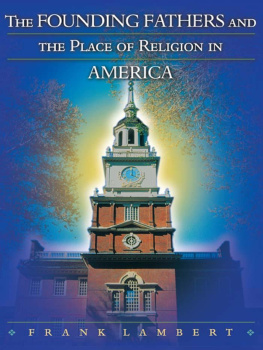THE
SERPENTINE WALL
The Winding Boundary between Church and State in the United States
James F. Harris
First published 2013 by Transaction Publishers
Published 2017 by Routledge
2 Park Square, Milton Park, Abingdon, Oxon OX14 4RN
711 Third Avenue, New York, NY 10017, USA
Routledge is an imprint of the Taylor & Francis Group, an informa business
Copyright 2013 by Taylor & Francis.
All rights reserved. No part of this book may be reprinted or reproduced or utilised in any form or by any electronic, mechanical, or other means, now known or hereafter invented, including photocopying and recording, or in any information storage or retrieval system, without permission in writing from the publishers.
Notice:
Product or corporate names may be trademarks or registered trademarks, and are used only for identification and explanation without intent to infringe.
Library of Congress Catalog Number: 2012013895
Library of Congress Cataloging-in-Publication Data
Harris, James F. (James Franklin), 1941
The serpentine wall: the winding boundary between church and state in the United States / James F. Harris.
p. cm.
Includes bibliographical references and index.
ISBN 978-1-4128-4970-8
1. Church and stateUnited StatesHistory. 2. United StatesChurch history. I. Title. BR516.H2545 2013
322.10973dc23
2012013895
ISBN 13: 978-1-4128-4970-8 (hbk)
This book is dedicated to all those who have been disadvantaged, denied rights or privileges, fined, imprisoned, tortured, or murdered because of their religious belief or nonbelief.
Congress shall make no law respecting an establishment of religion or prohibiting the free exercise thereof .First Amendment, United States Constitution
I contemplate with sovereign reverence that act of the whole American people which declared that their legislature should make no law respecting an establishment of religion, or prohibiting the free exercise thereof; thus building a wall of separation between Church & State. Thomas Jefferson, Letter to Danbury Baptists, 1802 [italics added]
Coming as this does from an acknowledged leader [Thomas Jefferson] of the advocates of the measure [the First Amendment], it [Jeffersons wall metaphor] may be accepted almost as an authoritative declaration of the scope and effect of the amendment thus secured.Chief Justice Morrison Waite, Reynolds v. United States, 1879
[The Supreme Court] is as likely to make the legal wall of separation between church and state as winding as the famous serpentine wall designed by Mr. Jefferson for the University he founded. Chief Justice Robert H. Jackson, McCollum v. Board of Education, 1948 [italics added]
Contents
As walls go, perhaps the Great Wall of China and the Berlin Wall are better known; however, no wall has been more important to American democracy than Thomas Jeffersons wall of separation between Church & State. Seldom if ever in American history has another metaphor gained comparable traction to explain such a fundamental principle. The American Revolution was primarily about liberty, and no liberty was more important or fundamental to the founders than the liberty of conscience, that is the freedom of religion. Freedom of religion was a radical departure from the religious tolerance that had appeared however briefly and precariously in other times and places. This fundamental liberty is explained and protected by the religion clauses of the First Amendment: Congress shall make no law respecting an establishment of religion, or prohibiting the free exercise thereof.
Perhaps one of the more ironic features of the founding of the United States and of the Constitution is that one of the most cherished liberties (and perhaps what many at the time considered to be the most fundamental liberty) is addressed in what has proven to be a very general and somewhat ambiguous manner. During the process of the passage of the Bill of Rights and immediately thereafter, why did so many feel that some additional clarification of the religion clauses of the First Amendmentthe establishment clause and the free exercise clausenecessary? For example, exactly what does an establishment of religion mean? And why say prohibiting the free exercise of religion? The meanings of prohibit run from hinder to forbid. So is the intended meaning that Congress shall not make any law forbidding the free exercise of religion, or is the intended meaning that Congress shall not make any law hindering the free exercise of religion? This is a rather serious and fundamental ambiguity with weighty potential consequences. Thus, some need existed for clarification, and Jeffersons metaphor of a wall separating church and state from his 1802 letter to the Danbury Baptists filled that need by becoming the commonly accepted interpretation of those religion clauses.
An explanation for the ambiguity of the religion clauses of the First Amendment might be sought in several different ways. The ambiguity may have been the result of a rushed, careless job on the part of the founders. However, by recognizing the detailed process by which the final wording of the religion clauses was reached, it is clear that a careless oversight is not the correct explanation to this ambiguity.1 On the contrary, several different drafts of the First Amendment were considered and discussed before the final version was approved. Maybe, as some have suggested, the ambiguity was the result of typical committee work, since the House and the Senate passed different versions, and the final result was the work of a congressional committee.
A major factor affecting the wording of the religion clauses of the First Amendment that is frequently not recognized or emphasized was the political reality the founders faced. At the time of the ratification of the Constitution and the drafting of the Bill of Rights, the harsh reality was that there were still fundamental issues that strongly divided the founders and the people in the colonies. Perhaps the most fundamental issue that divided the colonists was what has become known as the Federalist and anti-Federalist dividethe divide between those who favored a strong central government and those who opposed it. The divide was manifested by two major issues that were jeopardizing the ratification of the Constitution and the later approval of the Bill of Rightsslavery and religion.
The primary founders were, perhaps above everything else, libertarians with a fundamental commitment to individual rights and liberties. However, the view defended in this book is that they were forced to compromise that commitment to liberty by harsh political realities to secure the ratification of the Constitution. The accommodations that were made in the Constitution regarding slavery are widely known; however, in understanding the relationship between the issue of slavery and the founders fundamental commitment to liberty and individual rights, it is crucial to remember that slaves were not considered at the time to be full-fledged citizens.
The accommodations the founders made regarding religion are not so widely known, but in many ways the handling of the issue of religion was more important, because this issue involved the rights and liberties of citizens. At the time of the founding, eight of the thirteen states had an established religion, (i.e., a religion that was supported to some degree or in some fashion by public resources and the civil authorities).2 Just as ratification of the Constitution was threatened over the issue of slavery by the slave-holding states, ratification was also threatened over the issue of religion in the states with an established religion. Thus, the founders finessed the issue of religion by originally omitting any mention of God or religion in the Constitution itself. By the time the religion clauses of the First Amendment were drafted, political realities had again forced the protections provided against the establishment of a religion and for the free exercise of religion to be declared as protections against the


